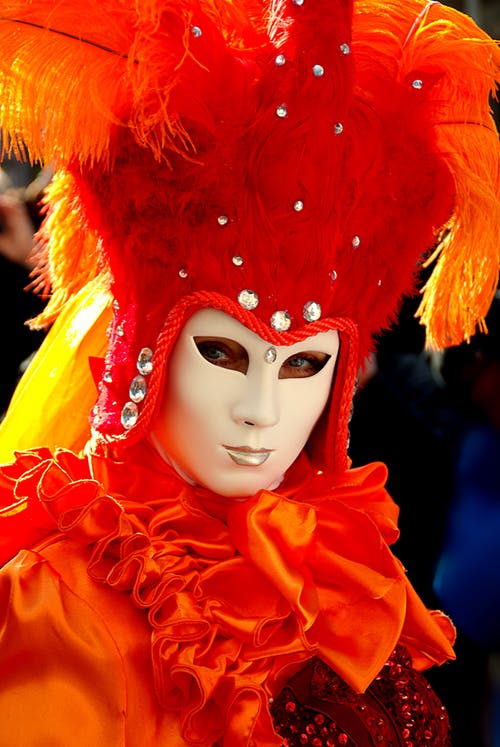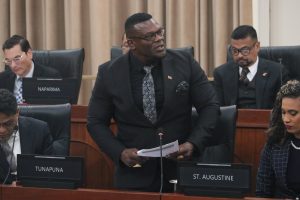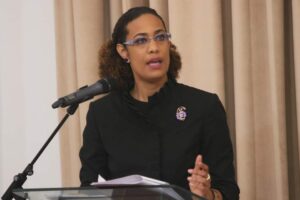
CARNIVAL 2020 in Trinidad and Tobago is in full swing. Our foreign visitors are here, colourful beaded and feathered costumes are taking to the streets and there’s soca, wine (a movement of the waist, not the beverage) and jam everywhere.
I doubt anyone has much time to read this week, but just in case you do, here’s a question to test your knowledge: how much do you know about the origins of our modern-day Carnival? Many of us have a vague idea. Let me tell you a little bit more…
Going back to 1498, the infamous Christopher Columbus discovered Trinidad and took possession of the island in the name of the King and Queen of Spain.
However, this little island didn’t have the attraction of immense wealth as did other countries in Spain’s Western empire, so we remained relatively unoccupied and ignored for over 250 years.
The King of Spain took notice of Trinidad in 1783 and colonisation began with a proclamation called The Cedula of Population. French colonists started coming to the island. The proclamation also offered tempting incentives to free blacks and coloured persons to come to Trinidad and stay. They received free grants of land – 16 acres for each man, woman and child and half of that for each slave brought. Article 5 of the Cedula also promised all settlers the rights of citizenship after five years residence, including the rights to hold public office if qualified.
The proclamation made no distinction between whites and coloureds – a concept peculiar to Trinidad at the time.
Moving on to 1797, the last Spanish Governor Jose Maria Chacon capitulated Trinidad to the British after 18 warships under the command of Sir Ralph Abercromby invaded island.
The British imposed martial law on the island for both Christmas and Lent, which were considered periods of sacrifice and solemnity. Naturally, the period in between were used for great merrymaking as a “farewell to the flesh”.
For the white upper class, it was a season of gay and elegant festivities, in the form of masquerade balls, dinners, concerts, street parades with carriages and hunting parties. Costumes and mimicry were central elements. The white elite would often dress up as black men and women and mimic how they perceived them.
The enslaved Africans were not permitted to engage in such festivities, but this did not stop them from having their own clandestine celebrations with masks and costumes, where they too mimicked their masters. This parallel celebration was called “Canboulay” (from the French cannes brulées), which commemorated the harvesting of burnt cane fields during slavery.
Slaves were emancipated in 1834, yet remain banned from participating in Carnival. By then, Camboulay had become a symbol of defiance and freedom.
Carnival among the descendants of freed saves evolved to feature, among other things, bawdy dancing in masks, calypso (songs sung mocking the white masters and rulers and an avenue for venting their feelings about the white elite), frequent clashes between groups of revellers carrying sticks and lit torches, and sometimes worsened into physical violence.
The British authorities disapproved of the festival, but the festival remained popular with much of the free population. In 1881, when the British Police attempted to ban aspects of Canboulay, riots erupted and lives were lost.
Drumming was banned, as were stick fighting. Not to be oppressed, tamboo bamboo (instruments made out of bamboo) was created.
In the 1930s, Camboulay music in the form of steel pans became widely used.
This music was popularised throughout the world when the US Navy set up a base in Trinidad and US sailors took the music of the “panmen” to the US and the rest of the world.
The Camboulay riots are still commemorated today and remain an important part of modern Carnival celebrations, as are the stick fighting, tamboo bamboo, drumming, calypso and much, much more.
Howsoever you choose to do so, enjoy your Carnival 2020 and be safe!
© Neela Ramsundar, LL.B (HONS), L.E.C Civil Litigation Attorney at Law & Certified Mediator.
Disclaimer: The contents of this article are for general informative purposes only and researched from publicly available websites such as Wikipedia, and those of Nalis and the National Carnival Commission. The author assumes no responsibility for any errors or omissions and the information is provided with no guarantees/warranties as to completeness and/or accuracy.
![]()














